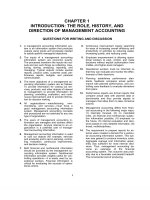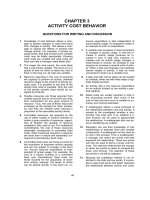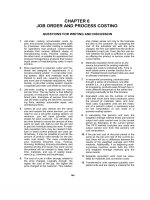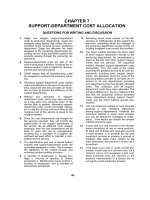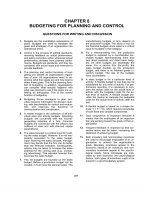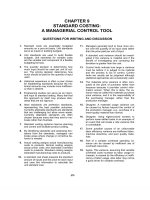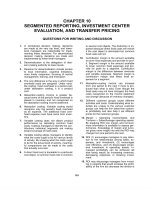Solution manual managerial accounting concept and applications by cabrera chapter 04 answer
Bạn đang xem bản rút gọn của tài liệu. Xem và tải ngay bản đầy đủ của tài liệu tại đây (168.04 KB, 196 trang )
��#ࡱ#�################>###�� ####################################����####
#######
###�����������������������������������������������������������������������������
��������������������������������������������������������������������������������
��������������������������������������������������������������������������������
��������������������������������������������������������������������������������
��������������������������������������������������������������������������������
�����������������������������#q`
###�#�###############o<####bjbjqPqP##################
###4####:###:##�3######�#######################��##########��##########��#######
###########�#####:#######:###:#######:#######:#######:#######:###############N##
######\#######\#######\##8###J\##d###�\######N#######P�##.###�_######�_##(###�_#
#####�_######�_######�_######�_######�_#######�#######�#######�#######�##5###I�#
#D###��##D###є##$###~�##h###�##�###�######################:#######�_############
##########�_######�_######�_######�_######�##############:#######:#######�_#####
#########�_######
�#######c#######c#######c######�_##�###:#######�_######:#######�_#######�#######
########c######################################################�_#######�#######
########c#######c##�###�n######:#######:########################################
#######################Vr######�_######�_##
###�
v`���##########\######�`######�q##&###########�s##t###
�##0###P�######�q##�###��######�a##�###��##L###Vr###############################
###############################################��##############:#######Vr##H###�
_######�_#######c######�_######�_######################################�_######�
_######�_######�######�######################################�b##X##############
#####################�_######�_######�_######P�######�_######�_######�_######�_#
#############N#######N#######N###�T###\######N#######N#######N########\######N##
#####N#######N#######:#######:#######:#######:#######:#######:#######����######
################################################################################
################################################################################
################################################################################
################################################################################
################################################################################
################################################################################
################################################################################
###################CHAPTER 4FINANCIAL STATEMENTS ANALYSIS - II. Questions1. The
objective of financial statements analysis is to determine the extent of a
firm�s success in attaining its financial goals, namely:To earn maximum profitTo
maintain solvencyTo attain stability2.
Some of the indications of
satisfactory short-term solvency or working capital position of a business firm
are:Favorable credit positionSatisfactory proportion of cash to the requirements
of the current volumeAbility to pay current debts in the regular course of
businessAbility to extend more credit to customersAbility to replenish inventory
promptly3. These tests are:Improvement in the financial positionWell-balanced
financial structure between borrowed funds and equityEffective employment of
borrowed funds and equityAbility to declare satisfactory amount of dividends to
shareholdersAbility to withstand adverse business conditionsAbility to engage in
research and development in an attempt to provide new products or improve old
products, methods or processes4.
Some indicators of managerial efficiency
are:Ability to earn a reasonable return on its investment of borrowed funds and
equityAbility to control operating costs within reasonable limitsNo
overinvestment in fixed assets, receivables and inventories5.
The techniques
used in Financial Statement Analysis are:I.
Vertical analysis which shows
the relationships of the items in the same year: also referred to as �static
measure.�a. Financial ratiosb.
Common-size statementsII.
Horizontal
analysis which shows the changes or tendencies of an item for 2 or more years;
also referred to as �dynamic measure.�a. Comparative statements - showing
changes in absolute amount and percentagesb.
Trend percentagesIII.
Use of
special reports or statementsa.
Statements of Changes in Financial Position
b.
Gross Profit / Net Income Variation Analysis6. Refer to page 133 of the
textbook.7. Horizontal analysis involves the comparison of items on financial
statements between years. Analysis of comparative financial statements or the
increase/decrease method of analysis and trend percentages are the two
techniques that may be applied under horizontal analysis. Vertical analysis
involves the study of items on a single statement for a single year, such as the
analysis of an income statement for some given year. Common-size statement and
financial ratios are techniques used in vertical analysis.8.
Trends can
indicate whether a situation is improving, remaining the same or deteriorating.
They can also give insight to the probable future course of events in a firm.9.
Trend percentages represent the expression of several years� financial
data in percentage form in terms of a base year.10. Refer to page 133 of the
textbook.11.
Observation of trends is useful primarily in determining
whether a situation is improving, worsening, or remaining constant. By
comparing current data with similar data of prior periods we gain insight into
the direction in which future results are likely to move. Some other standards
of comparison include comparison with other similar companies, comparison with
industry standards, and comparison with previous years� information. By
comparing analytical data for one company with some independent yardstick, the
analyst hopes to determine how the position of the company in question compares
with some standard of performance.12.
Trend percentages are used to show the
increase or decrease in a financial statement amount over a period of years by
comparing the amount in each year with the base-year amount. A component
percentage is the percentage relationship between some financial amount and a
total of which it is a part. Measuring the change in sales over a period of
several years would call for use of trend percentages. The sales in the base
year are assigned a weight of 100%. The percentage for each later year is
computed by dividing that year�s sales by the sales in the base year.13.
Expenses (including the cost of goods sold) have been increasing at an
even faster rate than net sales. Thus Premiere is apparently having difficulty
in effectively controlling its expenses.14.
A corporate net income of P1
million would be unreasonably low for a large corporation, with, say, P100
million in sales, P50 million in assets, and P40 million in equity. A return of
only P1 million for a company of this size would suggest that the owners could
do much better by investing in insured bank savings accounts or in government
bonds which would be virtually risk-free and would pay a higher return.
On
the other hand, a profit of P1 million would be unreasonably high for a
corporation which had sales of only P5 million, assets of, say, P3 million, and
equity of perhaps one-half million pesos. In other words, the net income of a
corporation must be judged in relation to the scale of operations and the amount
invested.II.
True or FalseTrue#True#False#True#True##False#True#False#False
#True##III. ProblemsProblem 1 (Percentage Changes)a. Accounts receivable
decreased 16% (P24,000 decrease ( P150,000 = 16% decrease).b.
Marketable
securities decreased 100% (P250,000 decrease ( P250,000 = 100% decrease).c. A
percentage change cannot be calculated because retained earnings showed a
negative amount (a deficit) in the base year and a positive amount in the
following year.d. A percentage change cannot be calculated because of the zero
amount of notes receivable in 2005, the base year.e. Notes payable increased 7 �
% (P60,000 increase ( P800,000 = 7 �% increase).f.
Cash increased 3% (P2,400
increase ( P80,000 = 3% increase).g.
Sales increased 10% (P90,000 increase
( P900,000 = 10% increase).Problem 2 (Computing and Interpreting Rates of
Change)Requirement (a)Computation of percentage changes:1. Net sales increased
10% (P200,000 increase ( P2,000,000 = 10% increase).2.
Total expenses
increased 11% (P198,000 increase ( P1,800,000 = 11% increase).Requirement (b)1.
Total expenses grew faster than net sales. Net income cannot also have
grown faster than net sales, or the sum of the parts would exceed the size of
the whole.2.
Net income must represent a smaller percentage of net sales in
2006 than it did in 2005. Again, the reason is that the expenses have grown at
a faster rate than net sales. Thus, total expenses represent a larger
percentage of total sales in 2006 than in 2005, and net income must represent a
smaller percentage.Problem 3 (Financial Statement Analysis using Comparative
Statements or Increase-Decrease Method)Requirement 1XYZ Corporation######Balance
Sheet######As of December 31#########Change#####Peso #
%###2005#2006####Assets######Cash and
equivalents#14,000#16,000#2,000#14.29%##Receivables#28,800#55,600#26,800#93.06%#
#Inventories#54,000#85,600#31,600#58.52%##Prepayments and others#
4,800#
7,400#2,600#54.17%##
Total current
assets#101,600#164,600#63,000#62.01%##Property, plant & equipment - net of
dep.# 30,200# 73,400#43,200#143.05%##Total
assets#131,800#238,000#106,200#80.58%########Liabilities and Equity#####Notes
payable to banks#10,000#54,000#44,000#440.00%##Accounts
payable#31,600#55,400#23,800#73.32%##Accrued
liabilities#4,200#6,800#2,600#61.90%##Income taxes payable#
5,800#
7,000#1,200#20.69%##
Total current
liabilities#51,600#123,200#71,600#138.76%##Share capital
#44,600#44,600#0#0.00%##Retained earnings# 35,600# 70,200#34,600#97.19%##
Total equity# 80,200#114,800#34,600#43.14%##Total liabilities and
equity#131,800#238,000#106,200#80.58%########XYZ Corporation######Income
Statement######Years ended December 31######(P
thousands)#########Change#####Peso #%###2005#2006####Net
sales#266,400#424,000#157,600#59.16%##Cost of goods
sold#191,400#314,600#123,200#64.37%##
Gross profit#
75,000#109,400#34,400#45.87%##Selling, general and administrative expenses#
35,500# 58,400#22,900#64.51%##Income before income
taxes#39,500#51,000#11,500#29.11%##Income taxes# 12,300# 16,400#4,100#33.33%##
Net income # 27,200# 34,600#7,400#27.21%##Requirement 2Short-term
financial position #####1.
Current Assets#increased by 62.01%#while#Current
Liabilities#increased by 138.76%##
(
Unfavorable##2.
Quick Assets#increased by 62.40%#while#Current Liabilities#increased by
138.76%##
(
Unfavorable##3.
Net
Sales#increased by
59.16%#while#Accounts Receivable#increased by 93.06%##
(
Unfavorable##4.
Cost of Goods Sold#increased by
64.37%#while#Inventories#increased by 58.52%##
(
Favorable##Leverage######5. Total Assets#increased by 80.58%#while#Total
Liabilities#increased by 138.76%##
(
Unfavorable##6.
Total Liabilities#increased by 138.76%#while#Total Equity#increased by
43.14%##
(
Unfavorable##Profitability
######7.
Net
Sales#increased by 59.16%#while#Cost of Goods Sold#increased by 64.37%##
(
Unfavorable########8.
Net
Sales#increased by
59.16%#while#Selling, General &
Administrative Expenses#increased by 64.51%##
(
Unfavorable##9.
Net
Sales#increased by
59.16%#while#Net Income#increased by 27.21%##
(
Unfavorable##10. Net Income#increased by 27.21%#while#Total
Assets#increased by 80.58%##
(
Unfavorable##Problem 4 (Trend
Percentages)Requirement (1)The trend percentages are:#Year 5#Year 4#Year 3#Year
2#Year
1##Sales
#125.0#120.0#110.0#105.0#100.0#########Cash
#80.0#90.0#105.0#110.0#100.0##Accounts receivable
#140.0#124.0#108.0#104.0#100.0##Inventory
#112.0#110.0#102.0#108.0#100.0##Total current assets
#118.8#113.1#104.1#106.9#100.0#########Current liabilities
#130.0#106.0#108.0#110.0#100.0##Requirement (2)Sales:#The sales are
increasing at a steady rate, with a particularly strong gain in Year
4.#####Assets:#Cash declined from Year 3 through Year 5. This may have been due
to the growth in both inventories and accounts receivable. In particular, the
accounts receivable grew far faster than sales in Year 5. The decline in cash
may reflect delays in collecting receivables. This is a matter for management
to investigate further.###########Liabilities:#The current liabilities jumped up
in Year 5. This was probably due to the buildup in accounts receivable in that
the company doesn�t have the cash needed to pay bills as they come due.##Problem
5 (Use of Trend Percentages)a.
1.
An unfavorable tendency could be
observed in Receivables in relation to Net Sales from 2003 � 2005 because
receivables had been increasing at a much faster rate than Net Sales. This
could indicate inefficiency in the collection of receivables or simply poor
company credit policy. The situation however, improved in 2006 and 2007 when
sales started to move up at a faster rate than accounts receivable. This would
indicate improvement in the credit and collection policy or more cash sales were
being generated. 2.
Unfavorable tendency in inventory persisted from 2003 to
2007 because it had been going up at a much faster rate than Net Sales. If this
continues, the company will end up with over-investment in inventory because the
buying rate is faster than the selling price. 3.
Favorable tendencies could
be noted in Fixed Assets in relation to Net Sales because inspite of the minimal
additions to fixed assets made by the company from 2003 through 2007, sales had
been increasing at a very encouraging rate.
4.
Net Income had likewise
been increasing at a much faster rate than net sales. This is favorable because
this would indicate that the company had been successfully controlling the
increases in Cost of Sales and Operating Expenses.b. Review computations of the
Trend Percentages. It will be noted that the Trend Percentages in Total
Noncurrent Liabilities and Equity from 2005 to 2007 were interchanged.
Correction should be made first before interpretation is done.
1.
The
upward tendency in current assets had been accompanied by an upward trend in
current liabilities. It could be noted that current assets had been moving up
at a much faster rate than current liabilities. This is favorable because the
margin of safety of the short-term creditors is widened.
2.
Favorable
tendencies could also be observed in noncurrent assets which had been increasing
and which increases had been accompanied by downward trend in noncurrent
liabilities. This would mean better security on the part of creditors and
stronger financial position. 3.
There is an unfavorable tendency in Net
Sales in relation to non-current assets. Sales had not been increasing at the
same rate as the increases in fixed assets. This could indicate that more
investments are made in noncurrent assets without considering whether or not
they could sell the additional units of product they are producing.c. The
unfavorable trend in net income could be attributed to the following tendencies:
Higher rates of increases in cost of sales as compared to sales.Higher rates of
increases in selling, general and administrative expenses in relation to net
sales.Higher rates of increases in other financial expenses than the rates of
increases in net sales.IV.
Multiple Choice QuestionsD#A, C,
D######A#B*######A#D######B#######D#######C#######C#######A#######D#######C#####
##
* (P400,000 � P160,000) ( P160,000 = 150%####Chapter 4
Financial
Statements Analysis - IFinancial Statements Analysis - I
Chapter 44-# PAGE #8#
4-# PAGE #9#MANAGEMENT ACCOUNTING - Solutions Manual4-1
################################################################################
################################################################################
################################################################################
################################################################################
################################################################################
#####-###/###2###;###W ##{
##[###_####
##
###
###
###
###
###
########�##�##�###�###S###T###�###�###O###P###�###�###�###������
ࡱ���ࡱࡱࡱ�z�z�o�d�Y�N�####h�#�##h�f�#CJ##aJ#####h�#�##h�c#CJ##aJ#####h�#�##h5#\#CJ##aJ#####h�#�##h�`�#CJ##aJ#####h�#�##hue
#CJ##aJ#####h�#�##h8)�#CJ##aJ#####h�#�##h�`##CJ##aJ#####h8)�#CJ##aJ#####h�#�##h#
#2#CJ##aJ#####h�#�##h#D##CJ##aJ#####h�#�##h�E�#CJ##aJ#####h�#�##h�X|
#CJ##aJ#####h�#�##h�#P#5#�6#�CJ##aJ#####h�#�##h�#P#CJ##aJ#####h�#�##h�#P#CJ#####
h�#�##h�#P#5#�CJ##OJ##QJ########
#######-###.###/###<###=###�###�###�#### ##
##|
##�
##�
###
##J
##r
##s
##�############�############�############�############�############�############
�############�############�############�############�############�############�#
###########�############�############�############�############�############�###
##################$#
&##F###��#^��#a$#gd�
�#####$#
&##F###��##�x#^��#a$#gd�
�######$#a$#####$#
&##F###��#^��#a$#gd�
�#####$#
&##F###��##�x#^��#a$#gd�
�##
###$##��##���^��#`���a$##########$#a$#######�;##n<##��##########################
################################################################################
################################################################################
################################################################################
################################################################################
################################################################################
########################################################################s
##�
##�
##�
######g###�####
###
###
###
###
##O
##�
##�
